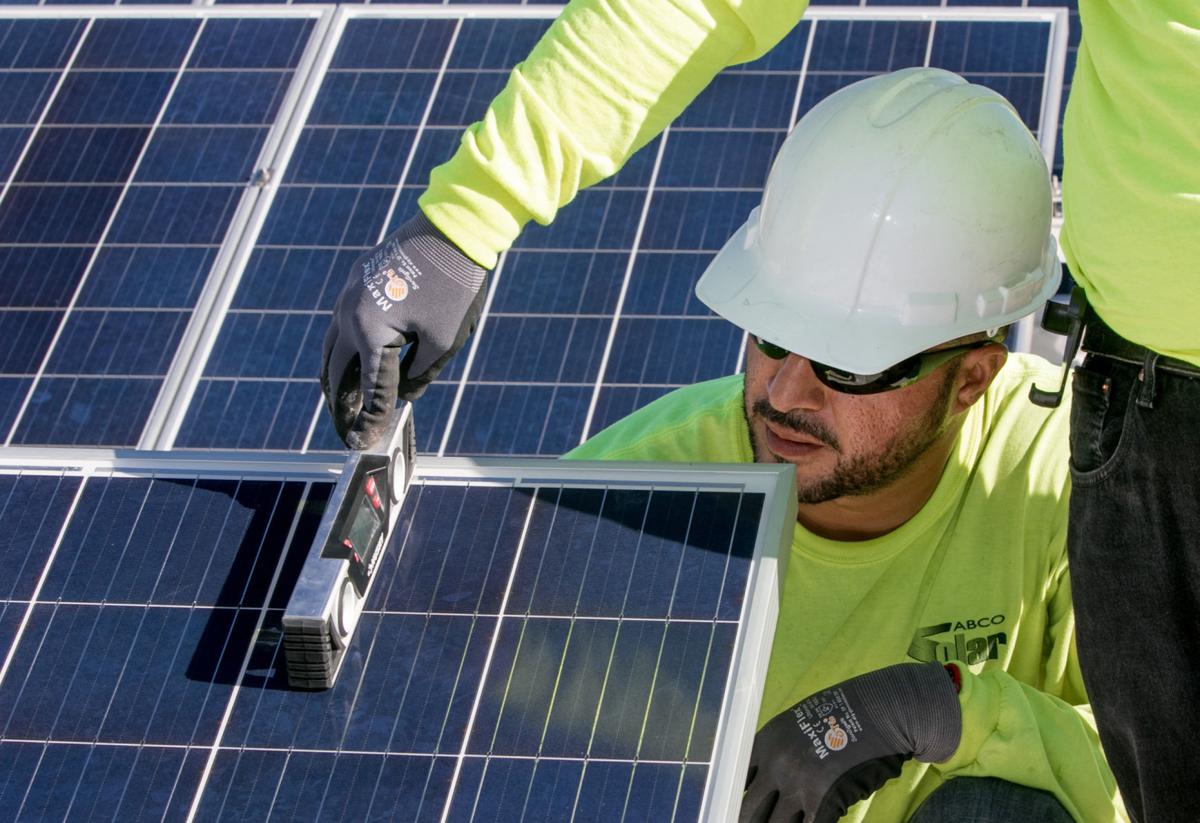Tucson Electric Power Co. says proposed new rates for excess energy provided by customers who install new rooftop solar systems are too high and would shortchange the company and other ratepayers.
But solar advocates say the proposed new solar export rates recommended by an administrative judge are too low to keep rooftop solar economically viable, as the case heads toward a final ruling by the Arizona Corporation Commission.
The commission has not yet scheduled a vote in the case, which will affect customers who apply to install solar after the utility panel issues its decision.
After years of debate and following regulators in other states, the Corporation Commission in December 2016 voted to end the practice of net metering, by which solar customers are credited for their monthly excess energy production at full retail rates.
TEP and other utilities contend that because they use less power from the grid, customers with rooftop solar systems aren’t bearing their fair share of fixed system costs.
The commission ordered each utility to propose new “solar export rates” instead of net metering, initially based on the wholesale cost of power from big, utility-scale solar farms.
The solar rates, which would be set for each new solar customer for 10 years, are critical to the equation of how long it takes for rooftop solar owners to recoup their investments and, solar advocates say, to the future survival of the local solar industry.
In a rate case combining TEP and sister utility UES Electric, Judge Jane Rodda issued a recommended order in mid-April that would set the TEP solar export rate at 9.64 cents per kilowatt-hour, compared with the retail rates averaging about 11 cents per kWh.
For UES, which serves Santa Cruz and Mohave counties, Rodda proposed an initial export rate of 11.5 cents per kilowatt hour compared with the rural utility’s 2016 average rate of 10.8 cents.
The rates would be locked in for each customer for 10 years and could be cut by up to 10 percent annually, under the commission’s earlier decision.
The judge also rejected the utilities’ rate-design proposals — including a new solar “grid-access charge” — ruling the plans were based on a flawed formula and ordering new studies.
TEP and other parties to the case filed exceptions to the judge’s recommended order ahead of final consideration by the full Corporation Commission, at an open meeting that has yet to be scheduled.
In its filing, TEP said the export rates proposed by the judge would delay efforts to recover more fixed system costs from solar customers, and it defended its cost-study methodology.
The utilities proposed an initial export rate of 10.7 cents per kWh for both TEP and UES, to be reset July 1 at 9.3 cents for TEP and 9.4 cents for UES. With no July reset, the utilities proposed a combined export rate of 9.73 cents per kWh.
The commission’s Utilities Division staff and the Residential Utility Consumers office had agreed with the initial export rates proposed by TEP and UES but proposed keeping them for a full year.
TEP also contends that Rodda inadvertently used outdated data to come up with her proposed rates.
Using the correct data from utility-scale solar projects that went online from 2013 to 2017 would result in an initial export rate of 9.14 cents per kWh for TEP, or 8.24 cents using combined data for TEP and UES Electric, TEP said.
The judge proposed that the new rates remain in effect for one year from the effective date of the commission’s eventual decision or on May 1, 2019, whichever comes later.
Meanwhile, solar advocates say Rodda’s proposal would harm consumers who want to go solar and hamstring the industry, arguing for higher initial export rates and a more gradual step-down in future years.
Local solar installer Kevin Koch, president of Technicians for Sustainability and a formal intervenor in the TEP case, said the proposed export rates are too low to keep rooftop solar attractive, and the 10-year fixed rate falls short of what is needed to finance such systems under loans or leases. Koch proposed an initial export rate of 10.78 cents
Koch said that even a 12.9 cent initial export rate approved last year for Arizona Public Service Co. has prompted a 60 percent decline in rooftop-solar applications.
The adoption of a TEP solar export rate that is too low “will likely result in the effective collapse of the solar industry in Tucson within a few years,” Koch said, noting that the higher rate in UES territory may prompt a temporary rooftop-solar boom there.
Solar-industry backed advocates Vote Solar, The Alliance for Solar Choice and the Energy Freedom Coalition of America argued for a much higher export rates, starting at about 12 cents per kWh, to account for system benefits of rooftop solar like reduced line losses.
The lower export rates proposed by the judge “will have far-reaching impacts on the economics of rooftop solar and will slow its growth in TEP’s and UES’ service territories,” Vote Solar said.
But TEP said the changes would be gradual compared with actual costs.
TEP said its proposed rate design will allow it to recover about $55 per month in fixed costs from the average rooftop solar customer, or $41 under the judge’s plan, while it costs about $100 to serve those customers.
The new rates and rules do not effect existing rooftop solar customers or those who apply to connect new systems before the Corporation Commission decides the rate case.
The matter was not on the commission agenda this week but could be taken up at the next scheduled open meeting June 12, or regulators could call a special open meeting.





